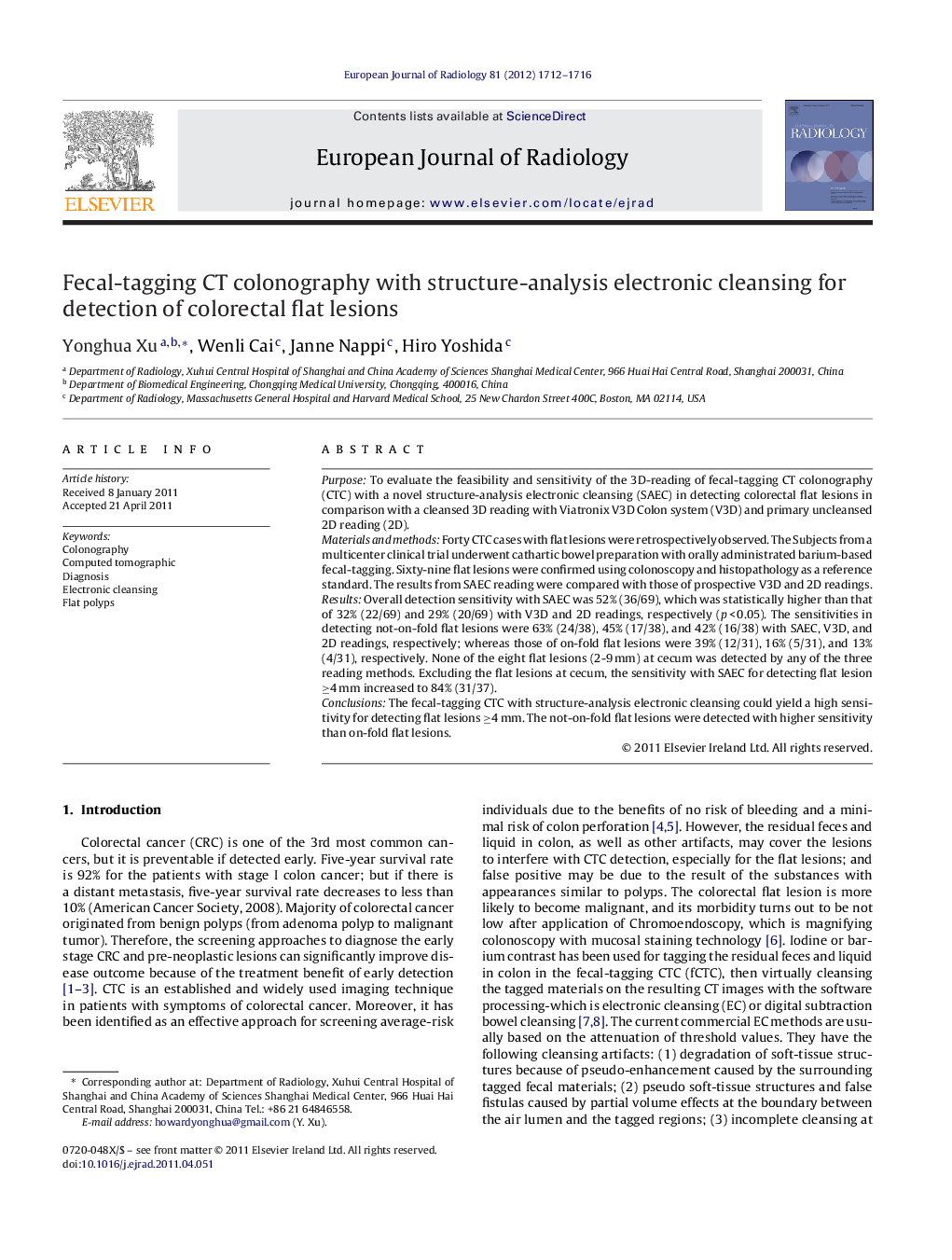| Article ID | Journal | Published Year | Pages | File Type |
|---|---|---|---|---|
| 4226090 | European Journal of Radiology | 2012 | 5 Pages |
PurposeTo evaluate the feasibility and sensitivity of the 3D-reading of fecal-tagging CT colonography (CTC) with a novel structure-analysis electronic cleansing (SAEC) in detecting colorectal flat lesions in comparison with a cleansed 3D reading with Viatronix V3D Colon system (V3D) and primary uncleansed 2D reading (2D).Materials and methodsForty CTC cases with flat lesions were retrospectively observed. The Subjects from a multicenter clinical trial underwent cathartic bowel preparation with orally administrated barium-based fecal-tagging. Sixty-nine flat lesions were confirmed using colonoscopy and histopathology as a reference standard. The results from SAEC reading were compared with those of prospective V3D and 2D readings.ResultsOverall detection sensitivity with SAEC was 52% (36/69), which was statistically higher than that of 32% (22/69) and 29% (20/69) with V3D and 2D readings, respectively (p < 0.05). The sensitivities in detecting not-on-fold flat lesions were 63% (24/38), 45% (17/38), and 42% (16/38) with SAEC, V3D, and 2D readings, respectively; whereas those of on-fold flat lesions were 39% (12/31), 16% (5/31), and 13% (4/31), respectively. None of the eight flat lesions (2-9 mm) at cecum was detected by any of the three reading methods. Excluding the flat lesions at cecum, the sensitivity with SAEC for detecting flat lesion ≥4 mm increased to 84% (31/37).ConclusionsThe fecal-tagging CTC with structure-analysis electronic cleansing could yield a high sensitivity for detecting flat lesions ≥4 mm. The not-on-fold flat lesions were detected with higher sensitivity than on-fold flat lesions.
